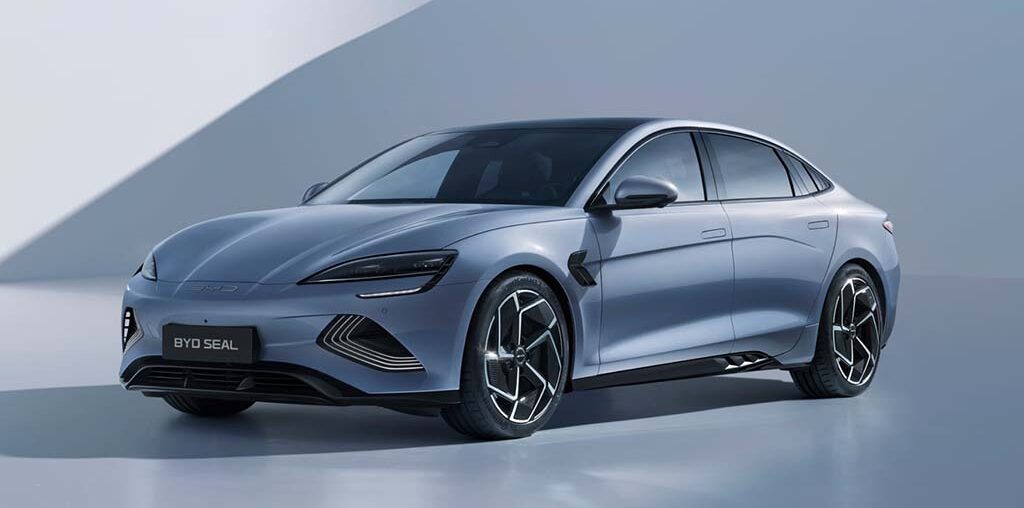Integrating EVs into our cities from Manila to Cebu, Davao to Baguio is paving the way for a brighter, more sustainable Philippines. Let’s dive into how these silent, clean machines are becoming the driving force behind our bright city dreams.
Before reviving our electric engines, let’s take a quick look at what’s happening in our archipelago’s world of smart cities.
What Makes a City “Smart”?
A smart city uses technology and data to improve the quality of life for its residents. It’s all about making our urban spaces more efficient, sustainable, and livable. Think of it as upgrading our cities from a basic cellphone to the latest smartphone – suddenly, everything’s connected, more efficient, and way cooler!
Smart City Initiatives in the Philippines
Our country isn’t just sitting back and watching the intelligent city revolution – we’re jumping right in! Here are some exciting initiatives already underway:
- New Clark City: This ambitious project in Pampanga aims to be the country’s first bright, green, and disaster-resilient metropolis. It’s like building a city with a brain from the ground up!
- Davao City’s Intelligent Transport System: Davao is getting innovative with traffic management, using technology to reduce congestion and improve public transportation. Hopefully, there will be no more hours stuck in traffic!
- Makati’s Smart City Program: The financial hub leverages technology for better governance, public safety, and citizen services. It’s like giving the city a high-tech makeover!
- Cauayan City’s Digital Transformation: This city in Isabela uses IoT (Internet of Things) devices and data analytics to improve agriculture and urban services. Who said you can’t teach an old city new tricks?
These initiatives are just the beginning. As we continue to urbanize and our population grows, the need for more intelligent, efficient cities becomes crucial. And guess what? Electric vehicles are set to play a starring role in this urban transformation.
EVs: The Missing Puzzle Piece in Smart Cities
Now, you might wonder, “What do electric cars have to do with smart cities?” Well, let me tell you – they’re not just a piece of the puzzle but more like the corner pieces that hold everything together! Here’s how EVs are supercharging our smart city ambitions:
1. Data Integration: EVs as Rolling Sensors
Imagine every electric car in Manila as a moving sensor, collecting data on traffic patterns, air quality, and road conditions. It’s like having thousands of tiny weather stations and traffic monitors zipping around the city!
- Traffic Management: EVs can communicate with traffic systems, helping to optimize traffic flow in real time. No more sitting at red lights when there’s no cross traffic!
- Infrastructure Planning: Data from EVs can help city planners identify where new roads, charging stations, or maintenance is needed. It’s like having a crystal ball for urban development!
- Environmental Monitoring: Electric cars can measure air quality and noise levels as they move through the city, providing valuable data for ecological initiatives.
2. Energy Management: EVs as Mobile Power Banks
Electric vehicles aren’t just energy consumers; they can also give back to the grid. This two-way relationship between EVs and the power grid is called Vehicle-to-Grid (V2G) technology.
- Load Balancing: During peak hours, EVs can feed energy back into the grid, helping to stabilize the electricity supply. Your car could be powering your neighbor’s aircon!
- Emergency Power Supply: In blackouts (hello, typhoon season!), EVs could serve as mobile power sources for critical infrastructure or households.
- Renewable Energy Integration: EVs can help store excess energy from renewable sources like solar and wind, making our cities greener.
3. Public Transportation Revolution
Electric vehicles aren’t just about private cars. They’re set to transform our public transportation system, too!
- Electric Buses: Cities like Makati are already testing electric buses. They’re quieter, cleaner, and can be integrated into intelligent traffic systems for better service.
- E-Jeepneys: Our iconic jeepneys are getting an electric makeover. It’s like combining Filipino tradition with high-tech innovation!
- Ride-sharing and Last-Mile Solutions: Electric scooters and e-bikes for rent could solve the “last mile” problem in public transport.
4. Economic Opportunities
The shift to EVs isn’t just good for the environment; it’s opening up new economic avenues for our cities:
- New Industries: EVs are creating new job opportunities from battery manufacturing to charging station installation.
- Tourism: “Green” cities with efficient, clean transportation could attract more tourists. Imagine Boracay with silent, emission-free vehicles!
- Cost Savings: As cities electrify their fleets, they’ll save on fuel and maintenance costs, freeing up the budget for other innovative city initiatives.
Innovations in EV Technology Supporting Smart City Goals
The EV industry needs to stand up. It’s innovating at breakneck speed, and many of these innovations align perfectly with intelligent city objectives. Let’s look at some exciting developments:
1. Wireless Charging Roads
Imagine driving your EV down EDSA, charging as you go! Some cities are experimenting with roads that can charge electric vehicles wirelessly. While we’re still in the Philippines, it’s an exciting possibility for the future.
2. AI-Powered Battery Management
New AI systems can predict when and where you’ll need to charge, optimizing your route and reducing range anxiety.
3.Vehicle-to-Everything (V2X) Communication
This technology allows EVs to communicate with the grid and other vehicles, pedestrians, and infrastructure. It’s like giving your car social skills!
4. Autonomous Electric Vehicles
While fully autonomous vehicles are still in the future, combining electric powertrains and self-driving technology could revolutionize urban mobility. Imagine summoning a self-driving electric taxi with your smartphone!
5. Recycling and Second-Life for EV Batteries
As EV adoption grows, so does the need for battery recycling.
Potential Challenges and Solutions for Integrating EVs into Urban Planning
While the future looks bright, integrating EVs into our intelligent cities is challenging. Let’s explore some potential hurdles and how we might overcome them:
- Infrastructure Overhaul
Challenge: Retrofitting existing cities with EV charging infrastructure and innovative grid capabilities can be costly and disruptive.
Solutions:
- Phased implementation, starting with high-traffic areas and gradually expanding
- Leveraging existing infrastructure (e.g., converting some gas stations to EV charging hubs)
- Public-private partnerships to share the cost and risk of infrastructure development
- Equity and Accessibility
Challenge: Ensuring that the benefits of EVs and smart city technologies are accessible to all citizens, not just the wealthy.
Solutions:
- Subsidies for low-income families to access EVs and charging infrastructure
- Prioritizing electrification of public transport to benefit a broader range of citizens
- Community charging stations in low-income neighborhoods
- Cybersecurity Risks
Challenge: As cities become more connected, they become more vulnerable to cyber-attacks.
Solutions:
- Robust cybersecurity measures for all connected infrastructure
- Regular security audits and updates
- Public education on cybersecurity best practices
The Role of Data in EV-Powered Smart Cities
Data is the lifeblood of smart cities, and EVs are set to be significant contributors to this data ecosystem. Let’s delve into how data from EVs will shape our urban future:
- Predictive Maintenance
- Road Infrastructure: Data from EV sensors can help identify potholes, worn-out road markings, and other issues before they become significant problems.
- Vehicle Maintenance: Predictive analytics can alert EV owners to potential issues before they lead to breakdowns, improving safety and efficiency.
- Urban Planning
- Traffic Flow Optimization: Data on EV movements can help urban planners identify congestion hotspots and optimize road layouts.
- Charging Station Placement: Usage data from existing charging stations can inform the optimal locations for new installations.
- Environmental Monitoring
- Air Quality Mapping: EVs with air quality sensors can create real-time pollution maps, helping cities target emission reduction efforts.
- Noise Pollution Reduction: Data on noise levels can help cities plan EV-only zones to reduce noise pollution in sensitive areas.
- Energy Management
- Demand Forecasting: Data on EV charging patterns can help utilities better predict and manage energy demand.
- Renewable Energy Integration: Information on EV battery capacity and charging status can help optimize using variable renewable energy sources.
- Citizen Services
- Personalized Mobility Solutions: Data on individual travel patterns can help cities offer personalized mobility recommendations, combining EVs with public transport and active mobility options.
- Emergency Services: EV data can help emergency services optimize their routes and response times.
The Economic Impact of EV Integration in Smart Cities
The shift towards EV-powered intelligent cities isn’t just about technology but also economics. Let’s explore the potential economic impacts:
- Job Creation
- New Industries: New industries will emerge, from EV manufacturing to battery recycling, creating job opportunities.
- Skilled Labor Demand: Increased demand for electrical engineers, data scientists, and savvy city planners.
- Green Jobs: Growth in renewable energy sectors to support EV charging needs.
- Cost Savings
- Reduced Healthcare Costs: Improved air quality could lead to fewer respiratory illnesses and related healthcare expenses.
- Lower Transportation Costs: EVs typically have lower operating costs than traditional vehicles.
- Energy Efficiency: Smart grids and EV integration can lead to more efficient energy use, potentially reducing city and city costs.
- Increased Property Values
- Areas with good EV infrastructure and innovative city features may see increased property values.
- Commercial areas could benefit from increased foot traffic due to EV charging stations.
- Tourism Boost
- Eco-Tourism: Cities with advanced EV infrastructure and innovative features could attract eco-conscious tourists.
- Tech Tourism: Showcase intelligent city innovations to attract business travelers and tech enthusiasts.
- Start-up Ecosystem
- Opportunities for local start-ups to develop innovative solutions for EV-smart city integration.
- Potential for the Philippines to become a hub for smart city and EV technology in Southeast Asia.




